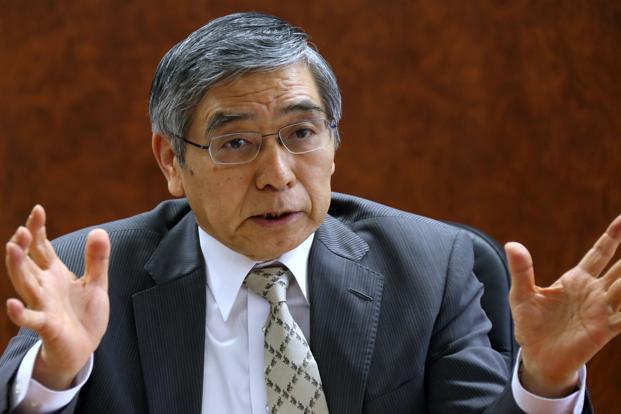The Bank of Japan’s unprecedented monetary easing operation under Governor Haruhiko Kuroda has entered its fifth year. Its target of 2% annual inflation, which the central bank was initially confident of achieving within two years, is still nowhere in sight as Kuroda has less than a year to go before his term as BoJ chief expires. The experience of the past four years shows that the BoJ policy alone cannot end the deflation that the Abe administration has vowed to bust.
Kuroda says it is still premature to discuss an exit from the policy. But the monetary stimulus, which involved massive purchases of government bonds and other assets by the central bank, and introduction of a negative interest rate policy, has had undesirable side effects, Kyodo reported.
The bond purchases kept long-term interest rates around zero, which reduced the government’s cost of borrowing and could diminish its sense of crisis over the need for fiscal reconsolidation. The BoJ’s purchase of investment trusts as a monetary easing vehicle distorts stock and real estate markets.
What was dubbed the monetary easing “of another dimension” was launched in April 2013, shortly after Prime Minister Shinzo Abe installed Kuroda as new BoJ governor to carry out the administration’s vow to eliminate deflation in this country.
The BoJ’s monetary stimulus is credited with making the yen fall against the dollar under Abe’s watch—inflating the earnings of export-oriented companies and pushing up share prices—and reinvigorating real estate transactions. The employment situation improved—the jobless rate of 2.8% in February was the lowest since 1994.


